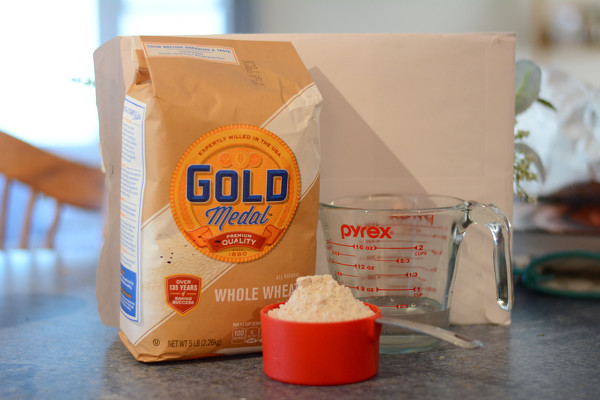Friday, September 2nd, 2022
Have a Sourdough September!
Fun to make, more fun to eat
By Leslie Gartrell

Submitted Photo
Want to make sourdough bread at home? Here's a quick guide to making home-made sourdough starter.
The best things in life require time, effort and patience. One of the best reminders of this is the simple art - and science - of bread baking.
In the spirit of inspiring home bakers across the globe, the 10th annual Sourdough September celebration encourages people to buy genuine sourdough from neighborhood bakeries or bake their own sourdough bread.
Sourdough is naturally leavened bread, which means it doesn't use commercial yeast to rise. Instead, it uses a "starter" - a fermented mixture of flour and water which contains yeast and good bacteria.
The starter is what produces the tangy flavor and slightly chewy texture found in sourdough, according to Jonathan Roode, a Coldwater native now living in Pennsylvania with more than 20 years experience as a chef, caterer and food industry professional.
Sourdough September is an initiative of the Real Bread Campaign run by the food and farming charity Sustain.
"The alchemy of turning three or four simple, cheap ingredients into a nutritious, delicious golden wonder is such a rewarding process," said campaign coordinator Chris Young in an email.
Young explained yeasts and lactic acid bacteria that are naturally present on the surface of grains end up in flour.
Roode said the process of making sourdough starter boils down to mixing equal quantities of flour and water, covering, resting, feeding and repeating.
He noted sourdough starter is temperature-sensitive and needs to be left to rest in a warm space, at least 70 degrees. The colder the starter, the more slowly it will grow, he said.

Submitted Photo
Sourdough starter is just two ingredients - equal parts water and flour, preferably whole grain four.
The yeast that forms during fermentation feeds on enzymes, which must be replaced by "feeding" the starter with fresh flour and water, he explained.
Wheat flour is recommended to start because the wild yeast that gives sourdough starter its life is more likely to be found in the flora- and fauna-rich environment of a whole-grain flour than in all-purpose flour, he said.
Roode suggested mixing 113 grams of both flour and water in a glass, crockery or food-grade plastic container.
The flour and water is mixed until no dry flour is visible and then covered loosely before sitting at warm room temperature for 24 hours.
After 24 hours, about 1/2 cup starter (113 grams) is removed from the container. Due to the early stages of fermentation, this starter likely will need to be discarded, he said.
However, discarded starter later in the fermentation process can be used to make pizza dough by combining it with commercial flour or used for a smaller batch of bread, he said.
To the remaining starter, equal parts flour and water are added back to the container, mixed, covered and then left to rest another 24 hours, he said.
By the third day, Rhode said bakers should notice the starter is bubbly, lighter in color and aromatic. It's now time to begin two feedings daily.

Submitted Photo
Mix the starter until the consistency is similar to peanut butter. Cover loosely and let it rest for 24 hours. Follow the steps in the story for day 2, right. After 3 days, the starter should be bubbly and aromatic.

Submitted Photo
After 3 days, the starter should be bubbly and aromatic.
For each feeding, weigh out 113 grams starter; this will be a generous 1/2 cup once it's thoroughly stirred down. The remaining starter is discarded or repurposed.
Add equal parts water and flour to the starter. Mix, cover and let rest for 12 hours before repeating.
The process of feeding the starter twice daily should continue until the starter has doubled in volume, is light in color and has fine, foamy bubbles on top, Roode advised.
Those starting their starter from scratch without the aid of a commercial leavening agent will likely take longer to be complete, he noted. Starting from scratch can often take a week if not more to have a useable starter.
Once the starter is ready, it should be fed one last time by discarding all but a generous 1/2 cup (113 grams) and fed as usual.
The starter should rest at room temperature for 6-8 hours and should be active, with bubbles breaking the surface, he said. Roode suggested salting the sourdough before baking for flavor.
Once the starter is complete, Young said the possibilities are endless.
"A sourdough starter can be used to make any type of bread, pancake etc. that can be made using baker's yeast, and more besides," Young said.





